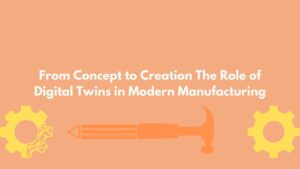Introduction
The manufacturing industry is evolving rapidly, driven by technological advancements and changing market demands. As the industry transforms, the need for a skilled and adaptable workforce has never been more critical. This blog explores the importance of workforce development and training in manufacturing, the challenges faced, and effective strategies to cultivate a skilled labor force.
The Importance of Workforce Development in Manufacturing
- Technological Advancements: The rise of Industry 4.0, automation, and digital technologies requires workers to possess new skills and knowledge. Training ensures that employees can operate advanced machinery, utilize digital tools, and adapt to new processes.
- Productivity and Efficiency: Skilled workers are more efficient and productive. They can troubleshoot problems quickly, perform tasks accurately, and contribute to continuous improvement initiatives, leading to enhanced overall efficiency.
- Quality Assurance: Proper training ensures that employees adhere to quality standards and best practices. This reduces errors, minimizes waste, and ensures the production of high-quality products that meet customer expectations.
- Safety: Manufacturing environments can be hazardous. Training programs focused on safety protocols and best practices help in reducing workplace accidents and injuries, creating a safer work environment.
- Employee Retention and Satisfaction: Investing in employee development shows a commitment to their growth and success. This fosters loyalty, improves job satisfaction, and reduces turnover rates, saving costs associated with hiring and training new employees.
Challenges in Workforce Development
- Rapid Technological Change: Keeping up with rapid technological advancements can be challenging. Manufacturers must continuously update training programs to ensure employees have the latest skills and knowledge.
- Skill Gaps: There is often a gap between the skills that employees possess and those required by modern manufacturing processes. Bridging this gap requires targeted training and development initiatives.
- Resource Constraints: Implementing comprehensive training programs can be resource-intensive. Small and medium-sized manufacturers may struggle with the costs and logistical challenges of training.
- Resistance to Change: Employees may resist new technologies and processes due to fear of the unknown or concerns about job security. Overcoming this resistance requires effective communication and change management strategies.
Effective Strategies for Workforce Development
- Continuous Learning Culture: Fostering a culture of continuous learning encourages employees to continuously seek out new skills and knowledge. This can be achieved through regular training sessions, workshops, and access to online learning resources.
- Tailored Training Programs: Developing training programs tailored to the specific needs of the organization and its employees ensures relevance and effectiveness. This includes both technical skills training and soft skills development.
- On-the-Job Training: Hands-on training and apprenticeships provide practical experience and allow employees to apply new skills in real-world scenarios. Mentorship programs also pair less experienced workers with seasoned professionals.
- Leveraging Technology: Utilizing e-learning platforms, virtual reality (VR) simulations, and other digital tools can enhance the training experience and make it more accessible. These technologies provide interactive and immersive learning opportunities.
- Partnerships and Collaboration: Collaborating with educational institutions, industry associations, and training providers can enhance the quality and reach of training programs. Partnerships can also provide access to specialized expertise and resources.
- Employee Involvement: Involving employees in the development and evaluation of training programs ensures that the training is relevant and meets their needs. Feedback mechanisms and surveys can help in refining and improving training initiatives.
Case Study: Successful Workforce Development
[Company Name], a leading manufacturer, implemented a comprehensive workforce development strategy that yielded significant results. Key initiatives included:
- Technical Skills Training: Regular workshops and e-learning modules focused on the latest manufacturing technologies and processes.
- Safety Training: Implementing VR-based safety simulations to train employees on handling hazardous situations.
- Mentorship Program: Pairing new hires with experienced mentors to provide guidance and support.
- Partnerships: Collaborating with local technical colleges to offer advanced training programs and certifications.
These initiatives led to a 30% increase in productivity, a 25% reduction in workplace accidents, and a noticeable improvement in employee satisfaction and retention.
Conclusion
In the dynamic landscape of the manufacturing industry, workforce development and training are essential for staying competitive and achieving long-term success. By investing in training programs, fostering a culture of continuous learning, and leveraging modern technologies, manufacturers can build a skilled and adaptable workforce. As the industry continues to evolve, those who prioritize workforce development will be better equipped to navigate challenges and seize opportunities, driving innovation and growth in the manufacturing sector.









